Owners of the Can-Am Defender are drawn to its reputation for durability and performance in challenging terrains. However, like any vehicle, it’s not without its issues, and belt problems are commonly reported among Defender enthusiasts. These belt issues typically manifest as an annoying squeal or whine coming from the belt area, particularly during idling or when driving downhill. Proper maintenance of the belt, including regular inspection and cleaning, can help mitigate some of these problems.
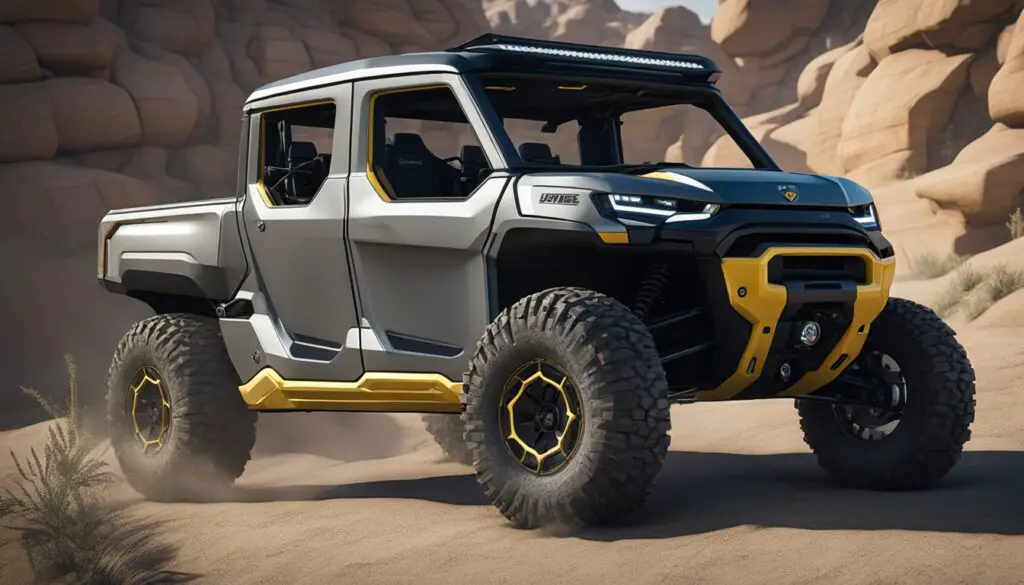
The Can-Am Defender’s belt is a critical component as it transfers power from the engine to the transmission. Belt problems, such as slippage, premature wear, and breakage, can diminish the vehicle’s performance or even lead to a complete vehicle halt. Understanding the root causes of belt problems is key to preventing them. These can range from improper tension and alignment to exposure to contaminants or extreme conditions that can weaken the belt over time.
Key Takeaways
- Regular maintenance helps prevent Can-Am Defender belt problems.
- Understanding the causes of belt wear can aid in troubleshooting.
- Inspections are crucial for sustained vehicle performance and safety.
Understanding Can-Am Defender Belt Problems
When tackling belt issues with your Can-Am Defender, it’s essential to identify symptoms, understand common causes, and recognize the performance effects. Accurate diagnosis and preventative measures can save you time and money.
Symptoms of Belt Issues
Your Can-Am Defender will clearly signal belt problems. Noise is a primary indicator—listen for a squealing or slapping sound from the belt. You may experience loss of power or feel the vehicle overheating, symptoms often associated with belt slippage.
Common Causes of Belt Failure
Belt problems can stem from multiple sources:
- Heat: The engine can overheat, causing the belt to warp.
- Environmental Factors: Exposure to dust, dirt, or water can cause deterioration.
- Contaminants and Debris: Small particles can abrade or damage the belt over time.
- Misaligned Components: Misaligned clutches or pulleys can also increase wear on the belt.
Effects of Belt Problems on Performance
A compromised belt directly affects your Can-Am Defender’s performance:
- Power Transmission: With belt slippage, the engine fails to efficiently transmit power to the drivetrain.
- Heat Issues: Excessive heat from friction can lead to motor inefficiency or even more serious engine problems.
Diagnosing Your Can-Am Defender’s Belt Problems
To diagnose your belt:
- Inspect the belt for visible damage, such as cracks or fraying.
- Check the clutch and pulleys for alignment and proper operation.
- Observe the belt while running the engine to spot any slippage.
Preventing Belt Problems
Preventive maintenance is key to avoiding belt issues:
- Regularly clean and inspect your belt for wear and adjust tension as needed.
- Ensure proper alignment of clutches and pulleys.
- Replace the belt as part of scheduled maintenance or at the first sign of deterioration.
- Keep the air intake and air filter clean to prevent debris from entering the engine area.
Routine Maintenance and Inspection
Maintaining your Can-Am Defender’s belt is crucial for peak performance. This section will guide you through necessary checks and procedures to keep your belt in top condition.
Checking Belt Tension and Alignment
Regularly check your drive belt tension and alignment. Improper tension can lead to premature wear or failure. Use a belt tension gauge and ensure that your belt tension aligns with your owner’s manual specifications. Always inspect the belt for any damage or wear and ensure the clutch system alignment is correct to avoid uneven belt wear.
Air Intake and Filter Maintenance
The air intake system keeps your engine breathing cleanly, but a clogged air filter can lead to reduced performance. Check and clean your air filter regularly, especially after dusty rides. A clean filter ensures a proper air-fuel mixture, while a pre-filter can help extend the life of your main filter by trapping additional dust particles.
Upgrading Belt Quality
Upgrading to a high-quality drive belt can improve performance and longevity. Choose a belt that matches your vehicle’s demands—whether for heavy hauling or high-speed riding. An upgrade may cost more upfront, but better quality materials can withstand tougher conditions and save you from frequent replacements.
Regular Cleaning and Lubrication
After rides, clean dust and debris from the clutch system to prevent dirt and dust build-up, which can abrade the belt and clutch components. Use a clean rag and approved cleaners; avoid high-pressure washers that can force water into bearings. Regularly lubricate the one-way bearing and rollers to prevent rust and ensure smooth operation.
Troubleshooting Common Can-Am Defender Problems
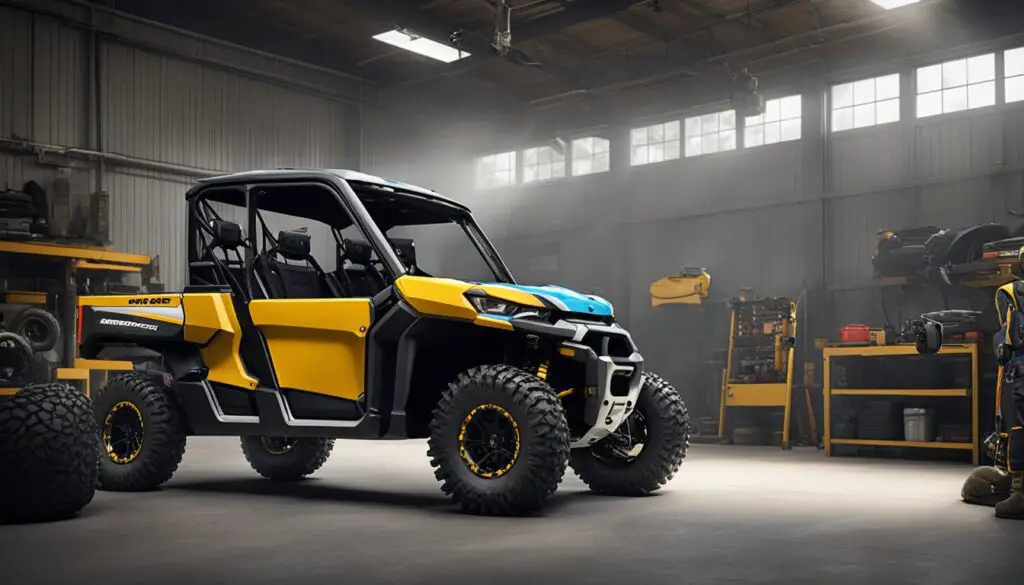
When your Can-Am Defender starts to exhibit problems, it’s important to tackle them head-on to ensure longevity and optimal performance. The following subsections will guide you through resolving some of the most common issues.
Overcoming Overheating Issues
If your Defender is overheating, check these critical components:
- Coolant Level: Ensure the coolant level is adequate. Top it up if it’s low.
- Radiator: Look for any blockages. Leaves, mud, or debris could hinder airflow.
- Cooling Fan: Confirm the fan’s functionality. A malfunctioning fan could lead to overheating.
- Thermostat: Check for a stuck thermostat, as it could prevent coolant flow.
Consider the ambient temperature as well since extreme weather can affect engine temperature.
Fixing Electrical Issues
Electrical problems in your Defender often manifest as starting problems or unusual noise from the ignition. Here’s how to address them:
- Battery Check: Ensure your battery terminals are clean and secured. A simple tightening of connections might solve power issues.
- Blown Fuses: Locate your fuse box and check for any blown fuses. Replace them as needed.
- Ignition Switch: If your vehicle has starting problems, a faulty ignition switch could be the culprit.
Regular electrical maintenance can help prevent these issues from cropping up.
Handling Steering Problems
Steering issues can range from inconvenient to unsafe. To handle steering problem in your Defender, follow these tips:
- Power Steering System: Listen for noises when turning. Whining sounds could indicate power steering problems which may require fluid top-up or component repair.
- Worn Steering Rack: A loose feel or difficulty in steering could signal a worn steering rack. Inspect for wear and consider replacement if necessary.
Environmental Factors Affecting Belt Life
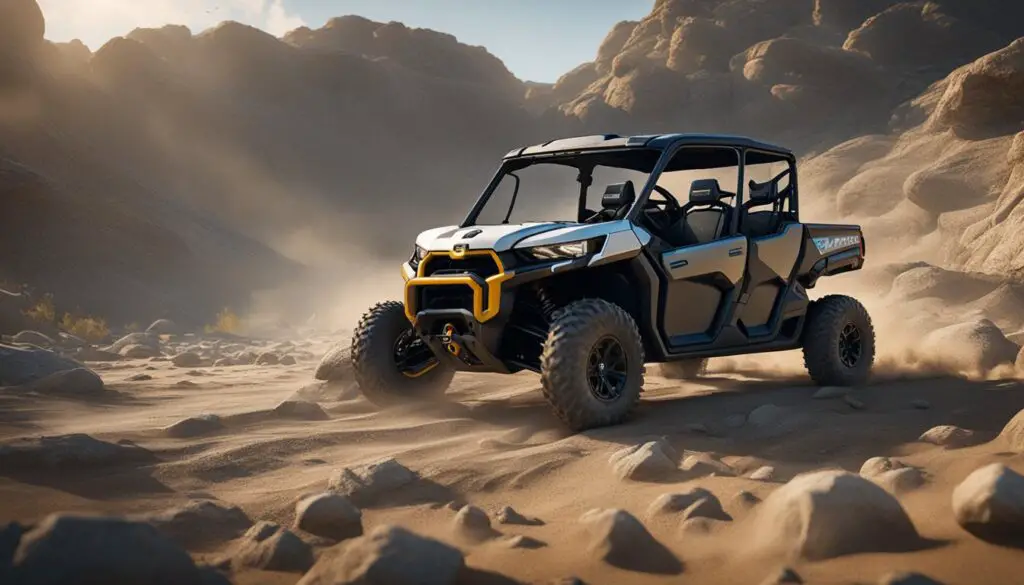
Your Can-Am Defender’s belt life is significantly influenced by environmental factors that can accelerate wear and tear. Understanding these can help you better maintain the belt and enhance its longevity.
Dust and Dirt: The Silent Killers
When riding in dusty conditions, it’s essential to know that dust and dirt can act as abrasive agents against your belt. They can clog the air filter, leading to decreased air quality and potential overheating. To combat this, make sure to routinely check and clean your air filter to prevent dust build-up.
Water Exposure and Belt Longevity
Water, snow, and mud encounters are inevitable. Exposure to water can sometimes cause the belt to slip, which diminishes its lifespan. Always inspect the belt after riding through wet environments and consider installing a snorkel kit to mitigate water intake, especially if you frequently traverse through challenging water crossings.
Dealing With Extreme Temperatures
Heat is a belt’s nemesis. Your Can-Am’s engine generates heat, and without proper cooling, the belt can suffer. Ensure your cooling fan is functioning correctly and consider using high-quality coolant to help manage engine and drivetrain temperatures. In cold environments, give your belt time to warm up to avoid becoming brittle and prone to cracking.
Rust and Corrosion Prevention
Rust and corrosion on the clutch components can directly affect your belt’s performance. They can arise from prolonged exposure to moisture or salt, especially in coastal or winter conditions. Regularly clean the clutch housing and invest in quality upgrades like a sealed cab or rust-resistant coatings to shield these critical parts from corrosive elements.
Performance Upgrades and Modifications
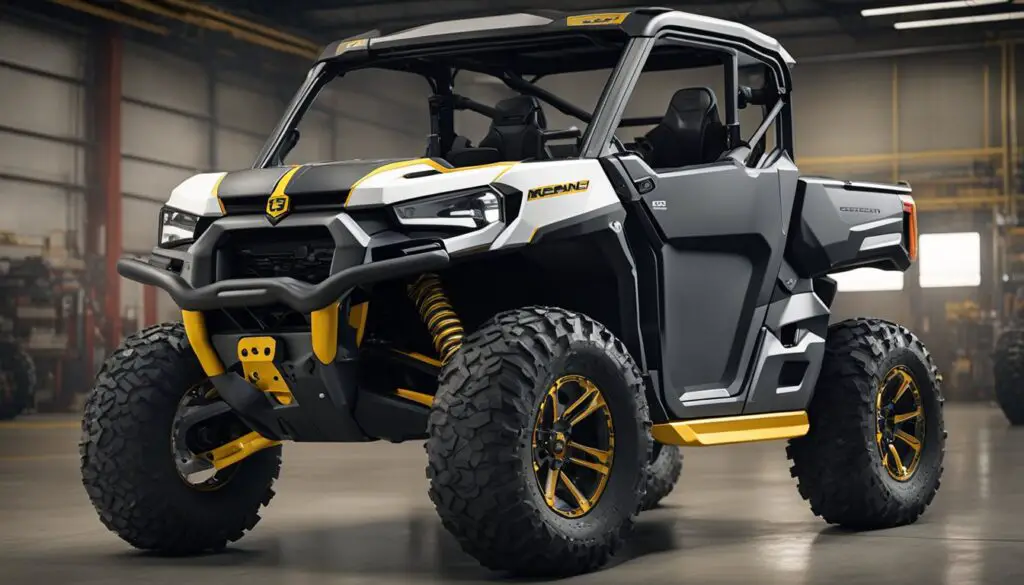
When you’re looking to boost the performance of your Can-Am Defender, consider upgrades that enhance the clutch system and protect your UTV from elements like dust and water. These modifications can optimize your vehicle’s handling and longevity.
Installing a Clutch Kit
Upgrading your belt with a high-quality clutch kit can significantly improve your UTV’s performance. This typically includes a more durable belt designed to withstand the rigors of off-road use, which is vital for vehicles with added weight from gear or larger tires. When selecting a clutch kit:
- Look for high-grade materials to ensure longevity.
- Consider kits that aim for a balance between engagement and top-end speed.
Adding a Snorkel for Protection
A snorkel isn’t just for deep water crossings; it’s an essential upgrade for keeping your engine and belt system clear of dust particles. By raising the air intake, you ensure your UTV breathes cleaner air, which is particularly beneficial in sandy or dusty conditions. When installing a snorkel:
- Confirm the snorkel fits your specific Can-Am Defender model.
- Ensure it doesn’t obstruct your airflow; proper installation is key.
Enhancing Airflow with Better Filters
The quality of air your engine takes in directly influences performance. By using high-performance air filters, you’re improving airflow and protecting your engine from contaminants. Here’s why better filters can make a difference:
- They decrease the number of particles reaching your engine and belt, extending their lifespan.
- Improved filters maintain optimal air intake conditions, enabling your UTV to perform efficiently.
Can-Am Defender: Owner Experiences and Tips
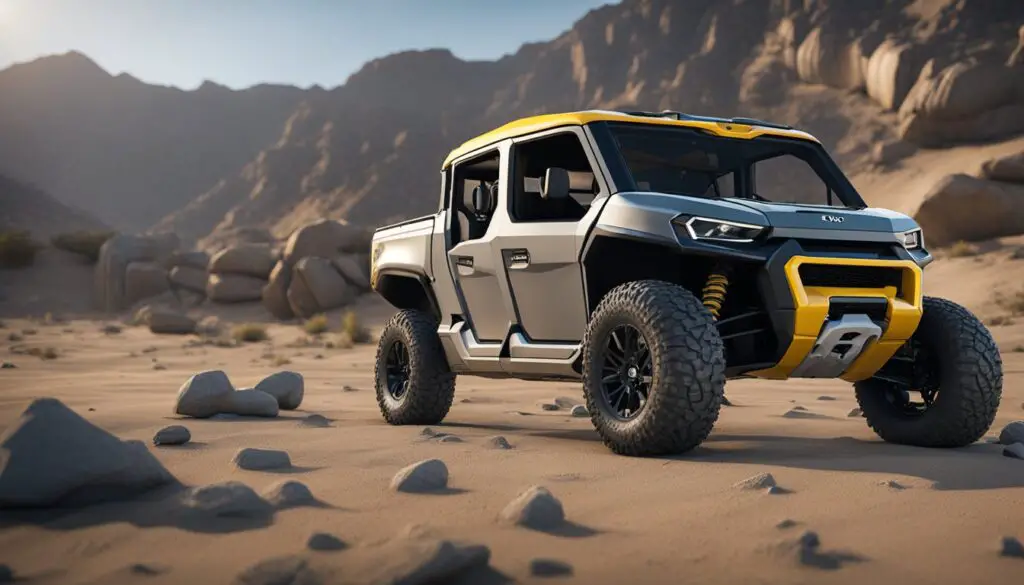
As a Can-Am Defender owner, you know that belt problems can be a nuisance. This section compiles helpful advice from the community, effective fixes, and ways to ensure your UTV remains in top shape.
Community Recommendations for Belt Care
- Regular Inspections: Check your belt frequently for any signs of wear or damage. Look for fraying, glazing, or cracking.
- Cleanliness is Key: Dirt and debris can reduce belt life. Keep the clutch and belt area clean to prevent premature wear.
Real-World Fixes and Solutions
- Correct Alignment: Misalignment of the belt can cause undue stress and wear. Ensure that your Can-Am’s belt is properly aligned according to the manufacturer’s specifications.
- Replacement Quality: When it’s time to replace the belt, choose a high-quality belt that matches your UTV’s requirements for the best longevity and performance.
Long-Term Investment in Your UTV
- Routine Maintenance: Like with any vehicle, sticking to a maintenance schedule can help prevent issues before they arise, which includes belt inspections and tension adjustments.
- Drive Responsibly: Sudden accelerations and heavy loads can strain your UTV’s belt. Drive in a way that promotes the longevity of all parts, including the belt, to maximize mileage and the quality of your experience.
Professional Insights on Can-Am Defender Maintenance
When maintaining your Can-Am Defender, professional mechanics emphasize the importance of regular maintenance intervals for the drive belt. Ensuring this vital component is in top condition is crucial for your vehicle’s performance and longevity.
Expert Opinions on Belt Maintenance
Your Can-Am Defender’s belt is a central component of the vehicle’s powertrain. Professionals stress the significance of inspecting your belt regularly for signs of wear, such as fraying or glazing. Here’s how to keep your belt well-maintained:
- Visual Inspection: Check your belt for cracks, fraying, and wear. A pristine belt should have a uniform width and no visible damage.
- Cleaning: Keep the belt and pulley system free of debris and dirt. Dirt can cause added wear and reduce your belt’s lifespan.
- Alignment: Ensure the belt is properly aligned. Misalignment could lead to uneven wear and potential failure.
- Tension: Your belt should have the correct tension. Belts that are too tight or too loose can cause performance issues.
Mechanic-Recommended Upgrades
To enhance the performance and durability of your Can-Am Defender, consider these professional mechanic-recommended upgrades:
- High-Quality Belts: Invest in a high-quality replacement belt. Choose options designed for higher performance and durability under stress.
- Transmission Upgrades: Upgrade components of the clutch system to optimize power transfer and belt life.
- Heat Resistance: Some belts offer better heat resistance, which is crucial since excessive heat can degrade belt quality faster.
Professionals often suggest that these upgrades, especially when paired with consistent maintenance habits, can lead to significant improvements in your Can-Am Defender’s drive belt system performance.
Frequently Asked Questions
When maintaining your Can-Am Defender, keeping an eye on the condition of the drive belt is crucial. These FAQs tackle your most pressing concerns about belt issues.
What are the common symptoms of a failing belt on a Can-Am Defender?
You might notice a high-pitched squealing noise, especially when idling or driving downhill, and reduced vehicle performance.
How frequently should the belt on a Can-Am Defender be replaced?
Replacement frequency depends on usage and conditions, but a good rule of thumb is to inspect your belt regularly and replace it every 1 to 2 years.
What steps can I take to troubleshoot belt slipping on my Can-Am Defender?
Check the belt tension and alignment. Clean the clutches and belt to ensure there is no debris causing slippage.
How can I tell if my UTV’s drive belt needs to be replaced?
Look for signs of wear such as fraying, glazing, or if you notice the belt has become thin or has chunks missing.
Are there any specific belt issues reported for the 2018 Can-Am Defender model?
Owners of the 2018 model have reported incidents with belt slipping and premature wear, necessitating closer monitoring and more frequent replacement.
What to check first when you have drive belt problems with your Can-Am vehicle
First, inspect the drive belt for visible signs of damage and make sure it is correctly seated in the clutch sheaves.

Leave a Reply